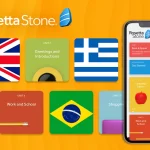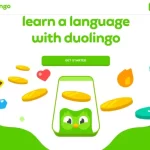I always thought I knew my child well. Apparently I don’t.
Mia is a teenager now and sometimes it’s hard to believe she was ever a chatty“chatty” adj = talks a lot toddler or energetic young girl. But when I look back with focus, I can remember her milestones“milestones” noun = traditional achievements at certain times in one’s life, her likes and dislikes, the funny things she said and the things she learned so quickly.
Every once in a while, she’ll tell me something about herself that I can’t believe! She describes things her young mind used to believe when she was little. “Really?” I’ll say. “You really thought that?” And we both laugh. I’ve got a little list now. I feel the need to share them with you as I stifle a giggle“stifle a giggle” phrase = try to hold back laughter. Don’t worry – I have Mia’s permission“permission” noun = when someone is allowed to do something, of course!
Adults didn’t sleep.
Yup. That’s what she thought, apparently. Like many North American children, her bedtime schedule was packed with rituals“rituals” noun = traditional set of actions we repeat: tooth brushing, pyjamas, story books, nighttime prayers, kisses, nightlights…Whew! It makes me tired just thinking about it! In my daughter’s young mind, she never imagined that adults also went through their own (slightly less complicated“complicated” adj = complex, with many different parts) bedtime routine. She thought grownups just stayed awake all night. I’m sure she couldn’t wait until she was older so she could skip“skip” verb = not do something you usually do going to bed!
The water filter was magic.

You know the Brita, right? It’s a plastic jug with a built-in water filter“filter” noun = a device that removes dirt and minerals for drinking water. I did not know this at the time, but when Mia was little, she thought it was full of magic“magic” noun  . How else could anyone explain it? She thought we placed it in the fridge empty. Later, when we pulled it out, the jug was full of fresh, clean water! It was the only possible explanation in her mind. All that was missing was the top hat, black cloak and wand. Abracadabra!
. How else could anyone explain it? She thought we placed it in the fridge empty. Later, when we pulled it out, the jug was full of fresh, clean water! It was the only possible explanation in her mind. All that was missing was the top hat, black cloak and wand. Abracadabra!
All the people on TV were animated.
Young children start off by only watching animation“animation” noun  , right? Cartoons and computer generated graphics. So when Mia started watching TV programs with real humans…she just assumed they were animated as well! Apparently, when I explained that shows like Fresh Beat Band and the Wiggles featured real people, she just couldn’t believe it! How could real humans be on TV?
, right? Cartoons and computer generated graphics. So when Mia started watching TV programs with real humans…she just assumed they were animated as well! Apparently, when I explained that shows like Fresh Beat Band and the Wiggles featured real people, she just couldn’t believe it! How could real humans be on TV?
The stereo played live music.

Wouldn’t that be nice? Imagine…You push a button on your phone, radio or CD player and out comes the song you want to hear! Live!“live” adj = in real time, not pre-recorded When she was little, my child naturally assumed that somehow we were able to contact famous musicians. We ordered an album or song we wanted to hear. When they received the message, the musicians would immediately start playing their instruments and singing, no matter what time it was. And somehow the music was sent directly to our speakers“speakers” noun  . How convenient that would be! Imagine getting a live version every time you wanted to hear your favourite musical artist!
. How convenient that would be! Imagine getting a live version every time you wanted to hear your favourite musical artist!
Facebook was a real book.
I believe my daughter heard us talking about photos we’d seen on Facebook when she was little. She ‘put two and two together’“put two and two together” idiom = notice details and use them to reach an understanding and naturally thought ‘Facebook’ was a book of face portraits“portraits” noun = pictures of people. She imagined adults flipping through actual picture books, looking at people’s faces! Cute! And understandable.
Pedestrian traffic lights were bus signals.

Do you know the pedestrian“pedestrian” noun = person walking on the street / sidewalk traffic signals? The ones with the image of the little person walking and the flashing red hand? They tell people when to cross the road and when to stop, right? When she saw these lights, Mia thought they had something to do with public transportation. In her mind, bus drivers used these signals as warnings as they went along their routes. Not a bad idea, actually…We should recommend that to the TTC“TTC” acronym = Toronto Transit Commission. It might improve service and safety!
GPS directed the turn signals in the car.
I had no idea that when Mia was in the back seat of our car, she thought her parents didn’t know where they were going! Well, that might have been the case for me sometimes. She noticed that whenever the turn indicators“turn indicators” noun  were flashing, Mommy or Daddy would turn either left or right. Therefore, she thought a GPS signal was helping us. It was giving us directions so we could know how to get to our destination“destination” noun = place you want to travel to. Hmm…Again, maybe a good idea?
were flashing, Mommy or Daddy would turn either left or right. Therefore, she thought a GPS signal was helping us. It was giving us directions so we could know how to get to our destination“destination” noun = place you want to travel to. Hmm…Again, maybe a good idea?
Drivers had to look in the rear view mirror – all the time.
OK, another driving-theme, but not a very practical“practical” adj = helpful, efficient (or safe) one. I suppose when my girl was little and sitting in the back of the car, she didn’t know exactly what the driver was looking at. She somehow thought the little mirror“mirror” noun  facing the back was more important than the front? She thought the driver had to look backwards while driving forwards? I don’t know. Perhaps it was a dream…
facing the back was more important than the front? She thought the driver had to look backwards while driving forwards? I don’t know. Perhaps it was a dream…
These are a few quirky“quirky” adj = strange, funny, different ideas that were swirling around in my little girl’s imagination. I love the fact that my daughter had all these ideas. I wonder how she felt when she finally figured out the truth.
I offer you a fun challenge. Ask the children in your life if there are strange things they used to believe about how the world works. Maybe their minds created much more fascinating“fascinating” adj = very interesting explanations than the truth ever will. They just might surprise you.
 Esther Penner is the creator of Open Up English. She has worked in the English language education industry for over 20 years. She has taught ESL, coordinated international student recruitment, arranged homestay accommodations and done contract writing for educational programming. Esther’s first teaching job in Japan inspired her love of travel and culture. She was born and raised in Toronto, Canada, where she lives with her husband, daughter and grumpy cat Henry.
Esther Penner is the creator of Open Up English. She has worked in the English language education industry for over 20 years. She has taught ESL, coordinated international student recruitment, arranged homestay accommodations and done contract writing for educational programming. Esther’s first teaching job in Japan inspired her love of travel and culture. She was born and raised in Toronto, Canada, where she lives with her husband, daughter and grumpy cat Henry.





